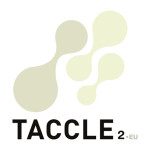LEARNING OBJECTIVES
At the end of this chapter you will be able to:
- Say what social bookmarking is.
- Explain how it can be an important tool for learning.
- Set up and use a social bookmarking account.
WHAT SOCIAL BOOKMARKING TOOLS DO
Social bookmarking tools enable users to store, manage, search, share and organise bookmarks of web pages.
The average teacher browsing the web may hit on hundreds of sites they want to be able to store for quick access at a later date. One way of doing this is to add them to your bookmarks on the toolbar of your browser. This has some disadvantages. Firstly the list very quickly becomes very long and unmanageable so you have to spend time setting up a system of folders and sub folders which is time consuming. Secondly, the bookmarks are held only on your computer, which is not useful if, say, you use different computers at home and at school or you simply buy another computer. Thirdly, if you use more than one web browser then you will end up with two sets of bookmarks. Fourthly, if you want to give someone else the link you have to cut and paste it into an email.
Social bookmarking tools solve all of these problems by holding the bookmarking information on-line. You load the application onto your computer and a symbol will appear in your navigation / bookmarks tool bar at the top left of your screen. On the best known one, del.icio.us, this is simply a button that looks like the del.icio.us logo. Each time you find a site you want to bookmark you hit the button. You will then be asked to add some keywords to label or ‘tag’ the bookmark. This can be anything you want. For example, you could tag something as ‘biology’, ‘plants’, ‘respiration’, ‘class 10’, ‘homework’, ‘best’.
The next time you open your bookmarking tool, you will see a list of all your tags – which is also likely to be very long. However, you can search ‘bundles’ (combinations) of tags to locate particular sites. For example, you could find all the best bookmarks related to the physiology of plants or you could find all the sites you had asked class 10 to read as homework by creating tag bundles. There is also, typically, a space for you to write a short description of the site or add notes if you want to.
Some software, such as del.icio.us, gives you options for viewing and sorting the tags. You can view them as a list or as a ‘tag cloud’ (this just means that the most frequently occurring tags appear as proportionately bigger text). You can choose to arrange your list of tags alphabetically or by the frequency that they occur.
You can then choose whether you want to share each bookmark with others. The bookmarks may be public or private or, typically, may restrict access to a group of users. So, for example, a group of biology teachers in the school could pool the sites they found useful.
THE RANGE OF TOOLS
There are a number of social software tools in existence. Most allow you to import and export bookmarks from the web, some do not. Others enable users to add comments or ratings to the bookmarks according to how useful they believe they are or to email bookmarks directly to other people. Most are free, some you have to pay for. Some sites cater for particular sectors or interests such as the business and commercial sector.
One of the most popular, general sites is del.icio.us. It is free, easy to use and this is the one we recommend you start with. Just Google it and download it onto your computer. Others include Simpy and Ma.gnolia
We also like Diigo, which lets you highlight any part of a webpage and attach sticky notes to specific highlights or to a whole page. (Diigo stands for “Digest of Internet Information, Groups and Other stuff”)
One that is popular with pupils is Fave (used to be Blue Dot) as it combines bookmarking with social networking and encourages social interaction. You can see what sites have been most visited by your friends and rate the sites.
Stumbleupon is not strictly a social bookmarking tool but a close relative. It is a web page recommendation tool based on a community of users who rate videos, images and web pages with a thumbs up or down symbol. Stumble operates alongside your browser – there are versions for Firefox, Internet Explorer and Mozilla. If you type in a word into the Google search engine and click on Stumble in the toolbar instead, you will be directed to the sites similar to ones that you or your friends or people with similar interests have rated highly.
USING SOCIAL BOOKMARKING IN THE CLASSROOM
Using bookmarking tools can be an invaluable e-learning resource in a classroom at two levels. Firstly, you and your pupils can share useful book marks around the topics you are teaching and secondly it is an invaluable way of helping students understand tagging, how knowledge is classified and used and the ‘authenticity’ and abuse of data sources.
You can set up a group for your class around a particular subject or theme which you can use to recommend sites to students or which they can use to add sites they have found useful. It provides good ‘evidence’ of their research, especially if they are asked to add a rating and a description. A useful homework assignment may be to contribute say two or three bookmarks to the group and comment on other people’s contribution. Looking at bookmarks that are publicly available is also a way of fast tracking research into a topic.
It is not so appropriate if you are looking for a space where you can build up a dialogue – applications such as blogs or wikis are better.
There is also a lot of learning around the issue of tagging which is dealt with in Chapter 12 as a standalone topic be- cause it is so important and also relates to many other areas.
ASSIGNMENTS
- Watch the video ‘Social Bookmarking in Plain English’ at http://uk.youtube.com/watch?v=x66lV7GOcNU
- Sign up for a Fave or del.icio.us account.
- Set up a group for one of your classes and add a list of bookmarks to web pages you think they would find useful.
- Ask your class to contribute one bookmark each or comment on someone else’s entry.
Resources and reference material
Del.icio.us: http://delicious.com/
Diigo : www.diigo.com
Faves : www.faves.com
Ma.Gnolia : http://ma.gnolia.com
Simpy : www.simpy.com
Stumbleupon : www.stumbleupon.com
Using Del.icio.us in educations (article):
GROSSECK, G. (2008) ‘Using Del.icio.us in education’ (WWW). Scribd’s CMS: www.scribd.com/doc/212002/Using-delicious-In-Education (25.05.09)
Social Bookmarking: http://en.wikipedia.org/wiki/Social




 English
English Nederlands
Nederlands Deutsch
Deutsch Italiano
Italiano Español
Español Português
Português Română
Română Cymraeg
Cymraeg
Good collection oh social bookmarking……..